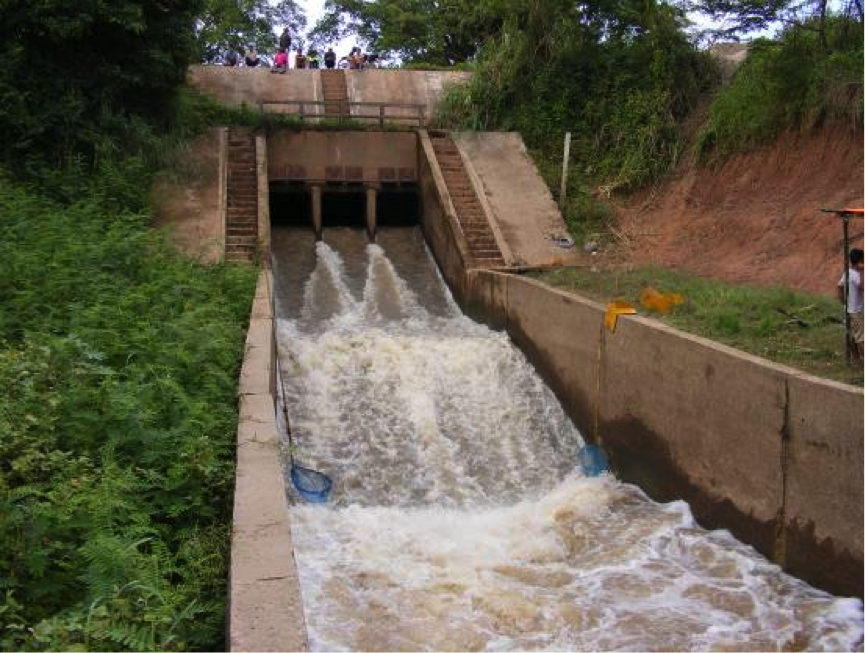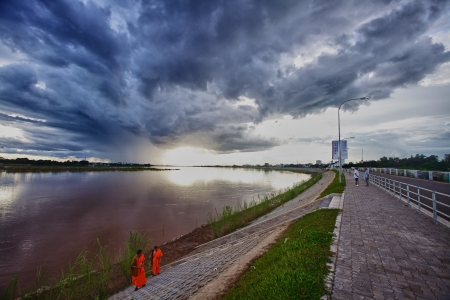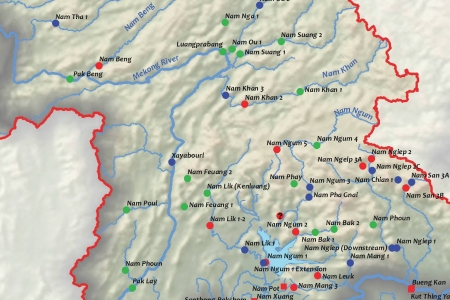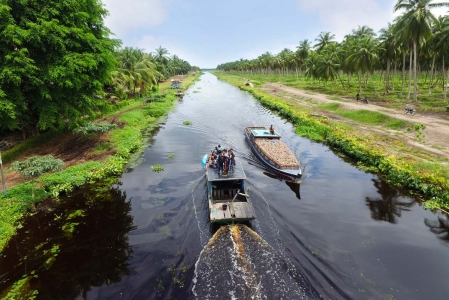
At the end of June 2016, WLE Greater Mekong published a series of maps identifying dams on the Irrawaddy, Salween, Mekong, and Red rivers and their tributaries. The maps cover existing dams, dams under construction, planned dams, and cancelled dams; both irrigation dams and hydroelectric dams are mapped, as long as they have a reservoir size of at least 0.5 km2 and/or have an installed capacity of at least 15 megawatts (for hydroelectric dams).
The following is the first half of an interview that took place on 8 July 2016, between Dr Kim Geheb—the WLE Greater Mekong Regional Coordinator — and the editor of Thrive. It is being published here in anticipation of the Great Mekong Forum on Water, Food, and Energy.
If you haven't checked it out already, please click here to read the first half of this interview.
So, we were discussing the implications of the high density of Chinese dams on the (relatively) tiny Chinese portion of the Irrawaddy, especially with regard to river fragmentation. Effectively, you're saying that some of these dams hold the potential to completely redirect the river?
Exactly. This points to one of the shortcomings of using Google Earth as a tool for tracking these dams. They use the best visual data that they have as soon as they have it, but those data might not be representative of the dry or wet season situation. A river might disappear during the dry season, but have water on both sides of the equation during the peak of the wet season. Nevertheless, what it does suggest is that there’s very intensive river fragmentation happening specifically on the Chinese side, but it’s not really being publicly addressed yet with regard to the Irrawaddy.
Apart from river fragmentation, are there any other elephants in the room? Other issues related to the maps that aren’t really being discussed yet?
River fragmentation is obviously a huge one. On a related note, as I’ve already mentioned, cumulative impact assessments of these basins are desperately needed but as of yet aren’t really being conducted. Part of the problem is that they’re extremely difficult to organize: they require very heavy lifting from a technical perspective. They would require strong synergies between hydrologists, ecologists, environmental economists, and other researchers who might not necessarily talk to one another on a daily basis. Our feeling is that conducting a cumulative impact assessment in a meaningful way will require moving away from the traditional three variables—that is, hydrology, fisheries, and sediments.
While we have seen some degree of useful cumulative impact assessments on the Mekong, they’ve only been with respect to the mainstream dams. Tributary dams have generally been ignored. Furthermore, in terms of looking beyond hydrology, fisheries, and sediments, I think it’s important to consider the zoning issues that I mentioned earlier. From a managerial and coordination perspective, it would make sense to focus conservation efforts on tributaries that see particularly high amounts of fish migration, and redirect dam projects to tributaries that aren’t necessarily as productive. This is not to say that I think hydrology, fisheries, and sediments aren’t important, but I think it’s also important to consider how rivers sustain livelihoods in a variety of ways—for example, by looking at land use patterns along tributary routes and determining how land use relates to water quality and quantity.
From WLE’s perspective, what are the next steps? How do you hope to see these data applied in the future?
Well, we’re particularly excited about how these data might be able to help NGOs add nuance to their analysis of dams. I’ve noticed that there is a popular tendency to focus on what might be called “flagship” dams—those enormous, controversial mainstream dams like the Tasang dam on the Salween or the Xayaboury dam on the Mekong. Our data enable NGOs to redirect their energies to the potentially more serious problems posed by huge concentrations of smaller dams, such as those in China that I mentioned earlier, or the tributary dams that do have serious ecological impacts downstream.
I would also like to see maps that focus on specific countries. We’ll often get requests, for example, for a Myanmar-specific map—requests from, say, a schoolteacher in Mandalay who wants to discuss dams with his students. Right now, since a large part of our mandate involves transborder, basin-wide work, we haven’t focused on individual countries. However, it could be a useful part of our outreach.
Before we finish, I do want to emphasize that what’s been really cool about this particular mapping project is that we’ve formed relationships with in-country institutions—in Vietnam, the Institute of Water Resources Planning; in China, the Asia International Rivers Center; the Department of Irrigation and the Department of Hydropower Implementation in Myanmar; the Royal Irrigation Department in Thailand, and EDL [Electricité du Laos] in Laos. They’ve really helped us out with a lot of the background technical data: it’s easy for us to locate a dam on Google Earth, but not to name it. So, in the published maps, you do see quite a lot of unknown dams that even the irrigation departments haven’t been able to identify—indeed, some cases where government irrigation departments were shocked to find that there were dams they had never heard about irrigating away in remote parts of their own countries. Nevertheless, it’s been an incredibly productive relationship, and those government departments have helped us out tremendously.












